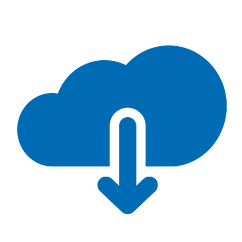 Cloud-based software and cloud computing are helping to shape the modern economy in incredible ways, disrupting established employment practices and driving a period of incredible innovation.
Cloud-based software and cloud computing are helping to shape the modern economy in incredible ways, disrupting established employment practices and driving a period of incredible innovation.
37% of small businesses have completely integrated cloud software into their daily business operations. That figure has risen from 14% in 2010 and is growing quickly as the benefits of decentralized computing resources become more and more evident to small business owners and entrepreneurs.
Access to a seemingly endless amount of business software with functions ranging beyond accounting and marketing means that smaller businesses and entrepreneurs can now realistically compete with industry leaders. It enables employees to effectively work from home and form teams with coworkers all over the globe. It empowers hobbyists and dreamers to put their ideas in motion and do so with professional tools and advice.
A recent study by Intuit reviews the past and present of cloud software and cloud computing, and gives a overview of what the future may hold.
A perfect storm of conditions has resulted in the situation that exists today.
Increased unemployment resulting from the economic crisis in 2008 left many recent graduates and experienced professionals out of work. The result of high unemployment has been an explosion of entrepreneurship--the highest net growth of jobs in the United States since 2008 has come from companies that have existed for less than 3 years, many of which have been leveraging cloud-based technology to operate their businesses.
So what does the future of cloud-based technology look like?
While cloud-based technology will continue the trend of integration with small businesses, it is the different ways in which companies will use cloud software that will define the net great period of growth for the technology.
Within the next five years, expect to see explosions of growth in these four areas of usage:
- Small Businesses and entrepreneurs utilizing business services provided by third parties. This means increased specialization from small businesses who will try to perform a single function more effectively than their larger competitors do.
- Freelancers who operate in multiple positions and business owners with second jobs. The ability to maintain a constant online presence and automate or outsource many of the day-to-day functions of a business allows users to pull in income from various sources.
- Businesses recruiting remote workers from around the world to complete team projects and then disbanding those teams. Being able to quickly receive and offer contracted work from a pool of employees that spans the globe means increased project efficiency for businesses everywhere.
- Small business with under 10 employees competing directly with huge companies. This trend has already begun and is perhaps most notable in the investment banking sector where there are major players known as "kiosk banks" which are effectively competing against some of the largest banks in their industry.
According to the Intuit study referenced above, these 4 areas are where growth is predicted to occur within the next 5 or 6 years--the "second phase" of the cloud technology lifecycle. After this time, we may see growth slow in the above utilizations and pick up in industries that have not yet emerged. As new, separate technologies (wearables come to mind) begin to emerge, businesses integrating cloud-based technology and software with those technologies will become the new leaders in growth.



